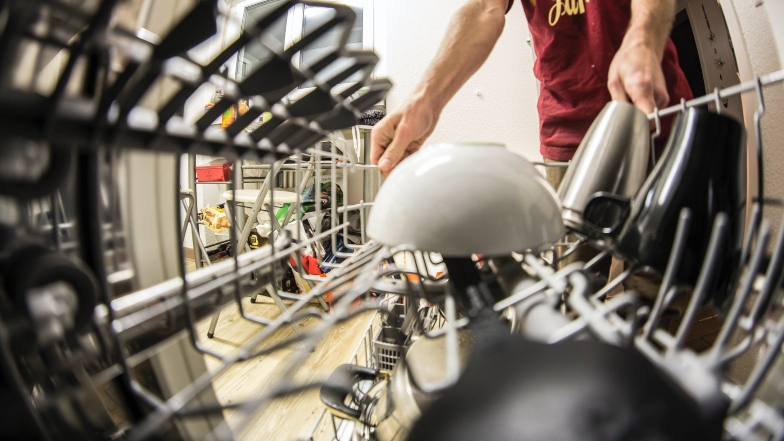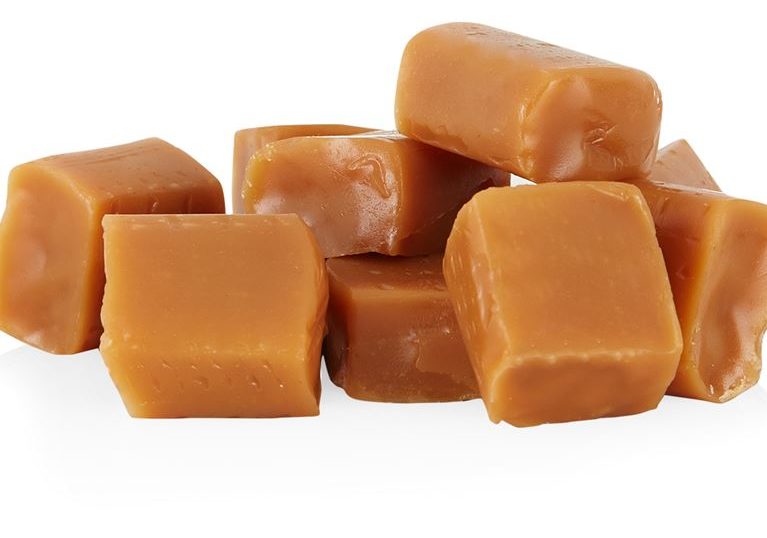
How To Disconnect a Dishwasher

Dishwashers are every household’s little helper, speeding up the cleaning-up job at the end of a meal or party and saving time spent scrubbing at the sink.
But like any other device, a dishwasher is prone to wear and tear and will need replacing at some point – a typical dishwasher, whether a slimline dishwasher or a more regular-sized version, will serve you for about a decade before you will likely need to change.
When that time comes, you’ll need to disconnect your dishwasher, so we have put together a step-by-step list of what you should do to disconnect it safely.
Learning how to install and uninstall your household appliances helps to avoid expensive fees that are usually involved in hiring a professional to do the job.

Differences between a freestanding and an integrated dishwasher
An integrated dishwasher, also known as a fitted dishwasher, is meant to blend in with your kitchen’s décor.
To fit with the décor, integrated washers are installed under a kitchen worktop and have a lid that looks like your kitchen’s furniture.
These washers are common in contemporary kitchens and are good at enhancing their functionality and style. Integrated dishwashers are either fully or semi-integrated.
Fully integrated dishwashers are completely covered with a kitchen cabinet door, and you’ll have to open the door to access its control panel.
Semi-integrated washers are partially obscured by a half kitchen cabinet door with the control panel peeking out at the bottom of the kitchen counter.
This type of washer is the most convenient in that you can operate it with the cabinet door closed. Integrated dishwashers can be as tall as 850mm.

Freestanding dishwashers aren’t attached to your kitchen counter, and you don’t need a cabinet door to conceal them.
Because of their conspicuous nature, freestanders come in sleek white, black or stainless steel finishes to fit in with the kitchen appliances you may have. All these dishwashers come in a standard 600mm length and 450mm width.
Another difference is in the wiring configurations. A freestanding dishwasher is mostly plug-and-play in that you connect the outlet to the kitchen sink and the inlet to your house’s main water line.
An inbuilt washer is a little bit more complicated because the wires are configured somewhere inside the dishwasher.
Before the process
Before starting the process, clear the dishwasher of any utensils or cutlery to prevent breakages during the disconnecting process.
Identify whether your dishwasher is freestanding or integrated. This will identify which removal method will work best for you and whether additional steps are required when disconnecting your dishwasher.
Afterwards, collect all the tools you need during the entire process to prevent moving back and forth to pick things up. Collecting your tools will enable you to plan your steps and ensure that you have every tool you require.
You will need:
- Towel/ cloth
- Bucket
- Screwdriver
- Adjustable spanner
- Wrench
- Gloves
- Voltage detector
- Pipe caps and additional water pipes
Disconnecting a freestanding dishwasher
Disconnect the power supply
The first step when dealing with electric equipment is to disconnect them from the power supply. Most dishwashers come with typical main plugs that connect into a socket. For this version, you need to switch off the power from the socket and remove the plug from the socket for good measure.
Other dishwasher versions have their power connection attached directly to the power supply unit. Handling the power supply unit can be a bit dangerous; you can choose to call a certified electrician to do it for you. If you’re proficient in DIY, locate the fuse box, identify the correct circuit breaker for your dishwasher, and turn it off.
After switching your dishwasher off, use a voltage detector to confirm that there’s no electric current flowing through your machine. You can now safely unplug the dishwasher and look at the water supply.

Disconnect the water supply
Your dishwasher’s water supply is also dependent on whether your dishwasher is freestanding or integrated. Freestanding washers’ water supply is usually easy to disconnect because they’re usually placed near the kitchen sink where the pipes lead.
Most freestanding water appliances such as dishwashers and washing machines have valves that direct water in and out of them. The valves have a handle that you can twist to switch off the water supply to your dishwasher.
Once you have shut off the valves, disconnect the inlet supply tube from the main water supply, you may need to use a pair of pliers here. Your water inlet to the dishwasher is made from plastic or copper, depending on its brand and model.
Some of the older dishwashers have no valves, and you may have to disconnect the main water supply using either a wrench or a spanner.
Some of these disconnections may require disconnecting two pipes, and if you aren’t replacing your washer, you may need to use a pipe cap to stop the water flow. Not all household water connections are the same, so you may need to look for a special cap for your specific type of pipe.
Modern plumbing requires the use of shutoff valves, and if you’re replacing your older dishwasher, then this is a good time to install them.
Disconnect the waste pipe
A freestanding dishwasher comes with a drain hose that’s responsible for letting grey water out of it once your dishes are clean.
Drain hoses are generally connected to a waste pipe directly connected to your kitchen sink or garbage disposal. Your dishwasher’s hose may either be bolted down or screwed into the waste pipe, and this is where a wrench comes in handy. Disconnect the pipe using the most effective tool for you.
You may encounter some water spillage while disconnecting this hose, and you can prevent this using the bucket you put aside and line up towels to absorb any errant greywater.
Remember that running water from the sink will find its way out of the hole where the waste pipe is connected; use one of your pipe caps to prevent any spillage.
Sometimes your waste pipe is connected to an independent line, which makes it even easier to disconnect. While disconnecting the rest of your dishwasher, use the tape you set aside to cover the water inlet and outlet on your washer to prevent water from leaking to the floor.

Removing an integrated washer
Because integrated dishwashers are meant to fit firmly under a kitchen counter, they are usually fixed in place using screws. This is where your screwdriver comes into play. Dishwashers come in different shapes, sizes and from other brands. A screwdriver set has screwdrivers of all shapes and sizes to cater to your needs.
Remove the dishwasher’s door
Integrated dishwashers are attached to metal brackets beneath your countertop. The easiest way to get to them is by opening your dishwasher’s door and unscrewing the screws holding the brackets in place.
Detach your washer’s faceplate
The next step would be to remove the metal mounting brackets just below the kitchen counter’s lip. The metal brackets are usually bolted down using screws to keep the dishwasher from moving as it works.
Next, detach the faceplate at the bottom of the dishwasher. The faceplate can either be connected using screws or spring clips. Use your tools to remove the plates as well. This leaves a disconnected integrated washer, but the process isn’t complete yet.
You may need to replace your power and water supply
The power and water supply in an integrated washer are mostly connected at the back and won’t be accessible before you slide the dishwasher out of its confines.
Once you’ve removed the faceplate, disconnect the power supply; this may be a white or yellow wire. The next step would be disconnecting the water supply; you may need a wrench to unloosen the nut. Removing the water supply line may cause a bit of spillage, and you can pre-empt this by fixing towels underneath.
It’s good practice to replace your power and water lines with time because they can degrade with time. This is the perfect time to use the new replacement pipes. Remember to unscrew the junction box cover at the bottom of the dishwasher and then disconnect the two ground wires. You will find a green ground wire at the grounding post; remove it.
Dishwashers work by allowing clean water in to clean your dishes and letting water out after. Dishwashers come with an air gap that prevents the greywater from flowing back into the dishwasher and dirtying your dishes.
Looping is whereby a drain hose is twisted and fixed under your kitchen counter as a temporary air gap. If your plumbing is older, then your plumber may have used the looping mechanism instead.
Move the dishwasher
Lower the dishwasher by releasing its legs; this lets you move the dishwasher quickly by disconnecting it entirely from the bottom of the countertop. You shouldn’t release all your dishwasher’s legs at once because it’ll be harder to level the appliance once it is on the floor.
Begin with the two front legs and use the appropriate wrench to loosen each leveling leg screw holding it in place.
You can now turn the legs to extend them but don’t fully extend them, leave out some space beneath the dishwasher to maneuver it outside the kitchen counter. Tilt the dishwasher and level the hind legs the same way you lowered the front ones.
Check that all connections are loose, place a towel below your dishwasher before lowering it. The towel will prevent your floor from getting scratched as you move your dishwasher around.
Dishwashers can be heavy, and you may need someone to help you lift yours. While moving the dishwasher, ensure any leftover wires and pipes slide slowly to prevent damage.
It’s good practice to remove the pipes and cables before removal, but this may not be the case for integrated dishwashers because of space constraints.

All you need to know about dishwashers
How long does it take to disconnect a dishwasher?
Disconnecting any appliance can seem like rocket science, especially when you’re new to the DIY life, but the process shouldn’t take you more than 1.5 hours.
This time frame includes the time required to disconnect water and power supplies, fix the pipe caps and clean up any leaks.
Have all the tools ready before you start and if you’re disconnecting it to reconnect it, then place your tools and the dishwasher pieces somewhere visible.
If you easily forget steps, take photos of every step you take while disconnecting the washing machine and use it as a reference point when reconnecting it.
How long should a dishwasher last?
Nothing much changes when dishwasher manufacturers make innovations. The main goal usually remains to clean your dishes as efficiently as possible, with the help of dishwasher tablets of course.
If you’ve chosen a good dishwasher, it may serve you for around a decade. Always check your manufacturer’s warranty information before making a choice.
Know when to call a professional
You may need a professional in two of the dishwasher disconnection process.
First, when disconnecting your machine from the electric supply, especially if your dishwasher’s power is integrated into your household’s main power supply. Unless you’re an experienced electrician or good at DIY, then leave all electrical work to professionals.
The second crucial step is when you’re disconnecting your dishwasher from the water and waste line. Messing up your water line will cost even more than calling a plumber to disconnect your water supply. That and you may end up with leaky pipes and a wet floor.
Final thoughts
You have learnt how to install a dishwasher and useful tips and tricks to make it possible to keep your dishwasher clean and safe to use.
The right tools required here are necessary because like any other appliances, products are different in size. If you trying to get rid of your old dishwasher, there are services available to receive your appliance for a newer model.





